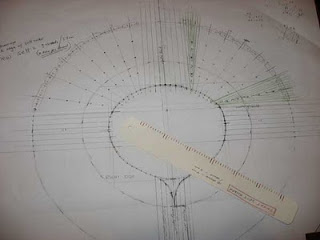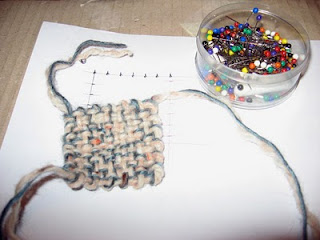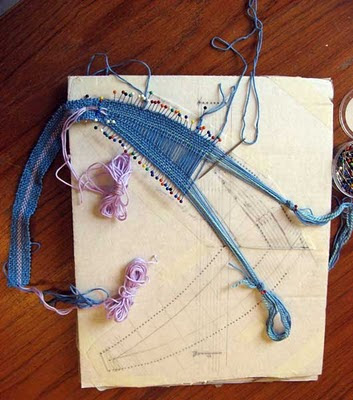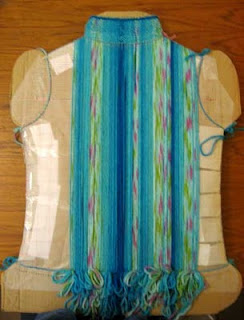Before cutting I took the opportunity to measure the sleeves and body of the jacket and to make the forms I will need when I weave those sections.
The sleeve forms are shaped pieces of cardboard which I will roll up and tape. The body form is shaped from a stack of styrofoam sheets with a cardboard cover front and back. I tried both sleeve and body forms inside the jacket to make sure they fit well. At the right stage, the loomskin will be pulled taut and attached to the forms for the weaving.
Finally I took the plunge and cut along the lines I had established.
I machine stitched along the cut edges to attach the reinforcing strips firmly.
The loomskin is now in three pieces. The main piece lies flat with five sections splaying out from the round yoke. The two underarm pieces each have a curved seam which joins the lower panel of the sleeve to the side panel of the body.






































